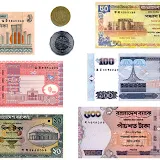Remittance in general terms the fortune out of fortune- hunters, migrants money or income from manpower exports, wage earner Non-Resident Abroad (NRA) hard earn currencies, foreign exchange remitted or sent by them to their accounts or to the dependents friends and families at home Land through proper channels or under AML.Remittances can also refer to the accounting concept of a monetary payment transferred by a customer to a business. Remittances are transfers of money by foreign workers to their home countries. Money sent home by migrants constitutes the second largest financial inflow to many developing countries, exceeding international aid. The latest estimates vary between IFAD estimates of US$401 billion and the World Bank information from central banks at a more conservative US$250 billion for 2006 and these figures are increasing by almost 30% year on year. Remittances contribute to economic growth, to the livelihoods of needy people worldwide. Moreover, remittance transfers can also promote access to financial services for the sender and recipient, thereby increasing financial and social inclusion. Note though that in 19th century English usage a remittance man was exiled overseas and sent a meager living United Nations' definition. The "United Nations Convention on the Protection of the Rights of All Migrant Workers and Members of Their Families"[1]defines a migrant worker as follows: “ The term "migrant worker" refers to a person who is engaged or has been engaged in a remunerated activity in a State of which he or she is not a national.” This Convention has been ratified by Mexico, Brazil, and the Philippines (amongst many other nations that supply foreign labor) but it has not been ratified by the United States, Germany, and Japan (amongst other nations that depend on cheap foreign labor). For an up-to-date listing of ratifications and signatories visit this special page on the website of Dec 18, the International Advocacy, Resource Center on the Human Rights of Migrant Workers. A considerable amount of research has been conducted on the topic of migration and remittances over the last few years. Early studies on immigration policy assumed that migrants leave their countries, settle in a new country, start integrating into their new society, and abandon their ties with their country of origin. Today, however, globalization makes it possible for immigrants to remain connected with their native countries while residing abroad. To address the latest developments on migration and remittances, the authors provide a global survey of the analytical and empirical literature on these issues. This paper reviews evidence on how migrants contribute to the economic development of their countries of origin. In addition to describing the state of knowledge regarding flows of people and migrant remittances worldwide, it focuses on the current literature dealing with the development impact of transfers of money, knowledge, and skills by migrants back to their home countries. The paper also examines the complex question of the impact of highly skilled migration on labor-sending countries. There is a continuing debate over what role migration should play in the mix of policies available in order to promote economic development. Although mechanisms for liberalizing goods, services, and capital markets are in place, the international mobility of labor still faces stringent restrictions. The paper, therefore, reviews proposed mechanisms to strengthen the governance of international migration, including policy options to make migration management bilateral, regional, or global. It also considers the relationship between international trade and development policies and migration policies, including how to tap to the diaspora. FOREIGN currencies sent by wage earners and other expatriate Bangladeshis to their families and relatives at home are turning into the largest foreign exchange earner other than export. The annual volume of such foreign exchange entering the economy, however, is yet to go a long way before becoming the major contributor to the country's Gross Domestic Product (GDP). Nevertheless, with its present level of contribution at 9.1 percent of the GDP as of 2006, the impact of the remittance could still be felt in the regions of the country that can boast of having the highest number of people working abroad. How is one to measure the impact of the foreign remittance on areas from where the largest number of wage earners are staying overseas? The primary effect of the injection of remittance in any area is the increase in the level of prosperity among the people receiving the money. The secondary effect is the creation of new job opportunities in the area stimulated by the money. Or in other words, the money creates a ripple effect on the local economy. This change in the local economy does also leave an impact on the overall poverty situation. A World Bank report has shown that the poverty rate has fallen in the Dhaka, Sylhet, and Chittagong regions between the years 2000 and 20005. The correlation between this fall of poverty and the inflow of foreign remittance has been positively established for those districts. In contrast to this, the picture is quite different in the western and southern districts such as Khulna, Barisal, and Rajshahi where the poverty situation has either worsened or remained stagnant. What is of interest here is the inflow of remittance in this region is also low compared to the Eastern districts mentioned before.
A report of the Global Remittance Guide from Washington says that Bangladesh has become the fifth-largest recipient of remittance by migrant workers and other expatriates leaving behind Pakistan in 2006. Last year the total volume of remittance received was US $5.8 billion, a figure that is far lower than the Philippines, which received US$14.9 billion to be ranked as the fourth-largest recipient of remittance from the migrants preceded by China, Mexico, and India in that order. Needless to say, India with its US$25.70 billion accounting for the remittances made by the migrants has climbed to the top position among other remittance recipient countries in the world. According to Bangladesh Bank sources ( in m ) Nov 08 US$ 761.38 BDT 52322.00 July08 US$ 820.71 BDT 56226.80 was the highest monthly inflows and the 11 months Total about 10 Billion USD ( More Details ) Different commercial Banks in Bangladesh, has established remittance arrangements with a number of exchange houses to facilitate wage earners to remit their money to Bangladesh. Already been in operation with Western Union, UAE Exchange Centre LLC, Wall Street Exchange LLC, Trust Exchange, Route Asia Exchange, Instant Cash, and Bangladesh Money Transfer, Al-Saad Exchange, First Solution Exchange, Al Ahalia Exchange Bureau, and Federal Exchange. Bangladeshi Banks maintain correspondence with other different Exchange Houses too. which are Al Fadaral Exchange, National Exchange, City Exchange, Future Exchange, Al Ghurair Exchange, Habib Exchange, Al Ansari Exchange, Emirates India International Exchange, Instant Exchange, Oman UAE Exchange, Modern Exchange, Purusuttam Kanji Exchange, Musandam Exchange, Lasidas Tharia Exchange, Oman United Exchange, and ICICI Bank. The extensive branch network of these Exchange Houses has been largely helping Bangladeshi expatriates working in the UAE, UK, Qatar, and Oman to transfer their funds speedily and efficiently through an online network. Singapore, Malaysia, Saudia, Greece, Italy, Turkey, Japan, South Korea, South Africa, Bahrain, Canada, Germany, Australia, France, and more ....Bellow a currency ALBUM FOR YOU click and visit DOWNLOAD.
 |
| Money currencies |




1 comment:
Hi dissertation writing,
Thanks visit. Appreciate- Count on your words and valued suggestion greatly. Will keep ups......cheers
Worm reagrs
Post a Comment